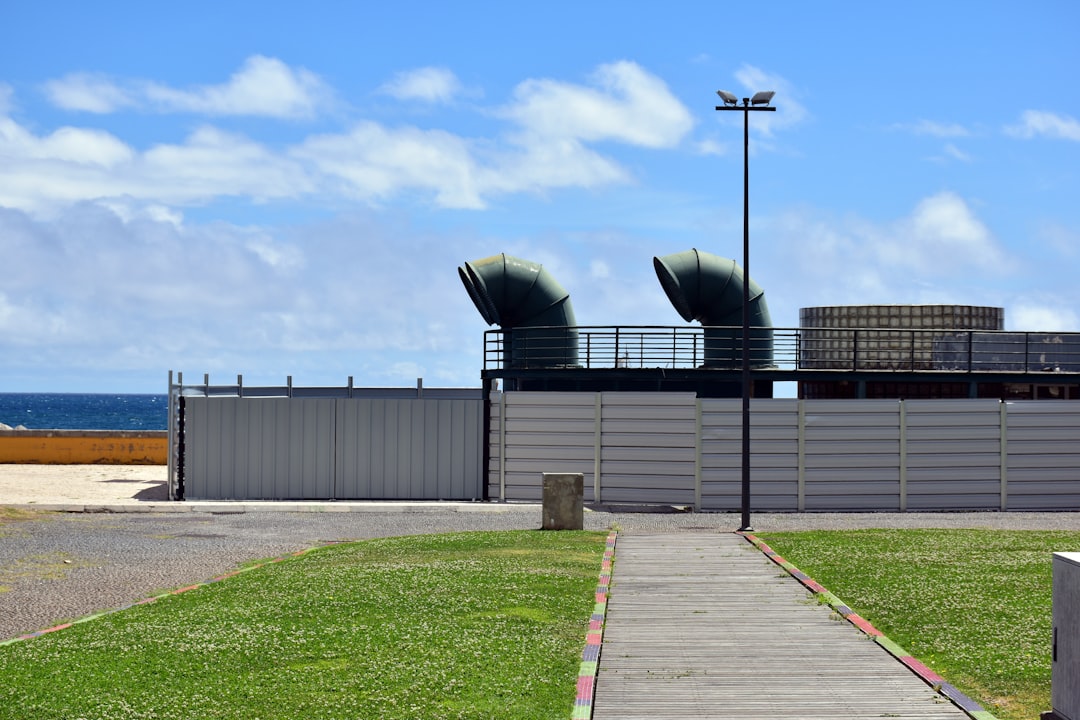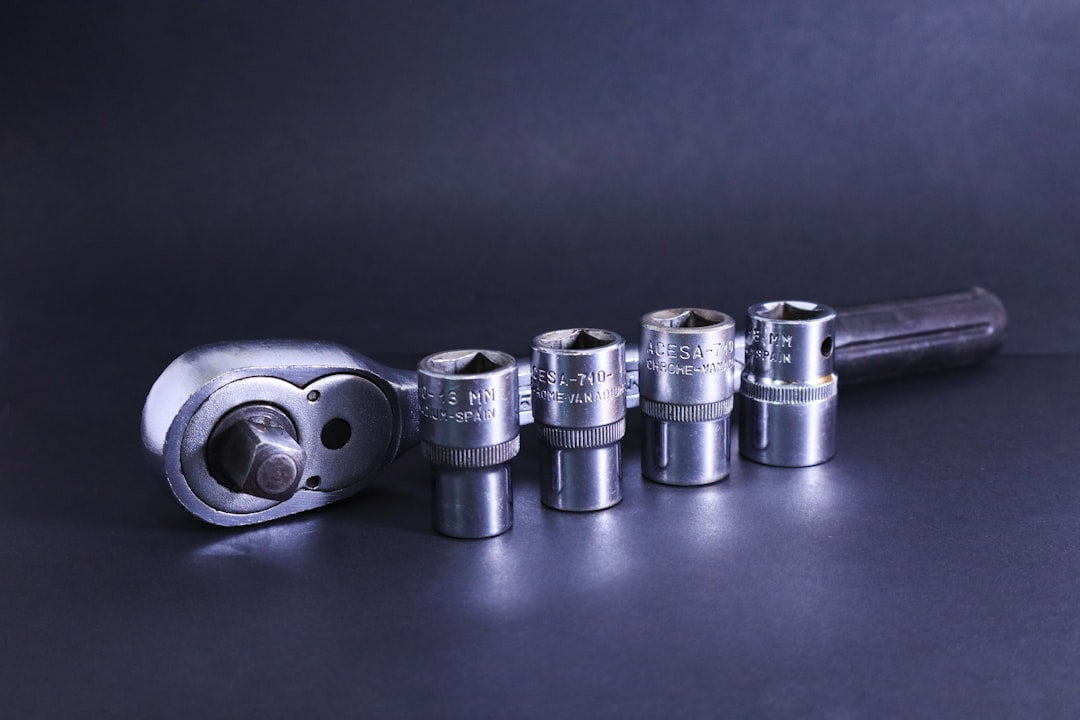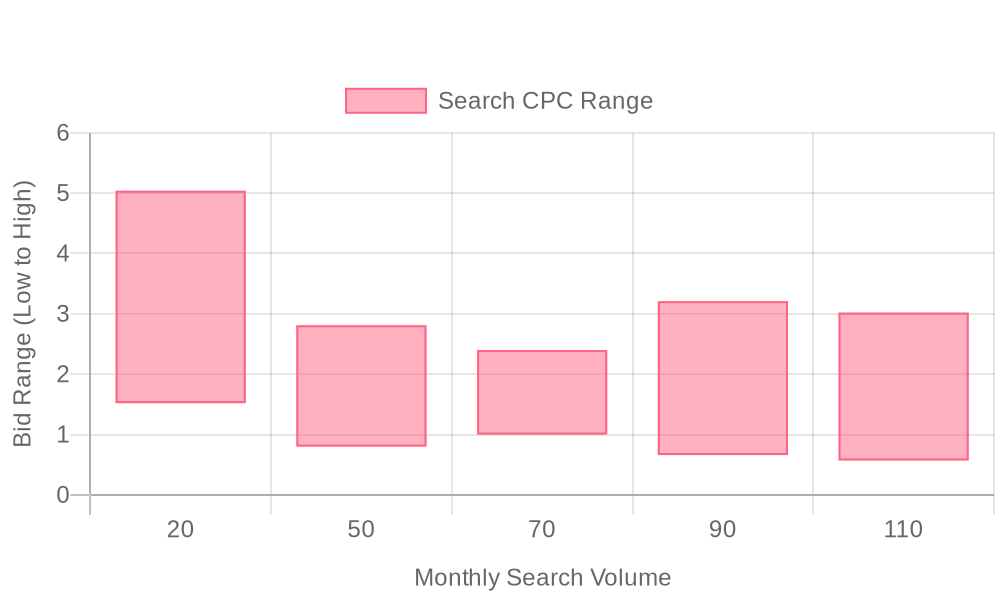
Supercharge your lead generation with a FREE Google Ads audit - no strings attached! See how you can generate more and higher quality leads
Get My Free Google Ads AuditFree consultation

No commitment
Supercharge your lead generation with a FREE LinkedIn Ads audit - no strings attached! See how you can generate more and higher quality leads
Get My Free Google Ads AuditFree consultation

No commitment
Supercharge your lead generation with a FREE Meta Ads audit - no strings attached! See how you can generate more and higher quality leads
Get My Free Google Ads AuditGet My Free LinkedIn Ads AuditGet My Free Meta Ads AuditFree consultation

No commitment
Supercharge your lead generation with a FREE Google Ads audit - no strings attached! See how you can generate more and higher quality leads
Get My Free Google Ads AuditFree consultation

No commitment
In today's complex marketing landscape, leveraging digital channels is crucial to reaching specialized audiences effectively. Google Ads plays an integral role, especially for businesses in niche sectors like Valve Automation Systems. These ads capture high-intent prospects right when they're searching for specific solutions, bridging the gap between awareness efforts and actual sales. Modern solutions now allow businesses to intercept decision-makers as they look for solutions, targeting based on unique technical specifications, and measuring ROI comprehensively from click to deal. Moreover, the challenge of missing high-value prospects because they aren't tracked is increasingly addressed through advanced tools enhancing CRM integrations. Google Ads also bridges online and offline marketing, allowing remarketing to happen seamlessly across digital and physical audiences. This guide will explore how such systems can effectively utilize Google Ads to grow their business.

B2B marketers in the valve automation sector need a precise, data-driven approach to paid media if they want to engage technical buyers and drive qualified pipeline. The competition for high-value leads is intense, and generic demand generation tactics rarely surface the decision-makers behind enterprise automation initiatives. For a deeper dive into successful B2B strategies, explore guides on account-based marketing.
A targeted Google Ads strategy enables revenue teams to put their solutions in front of engineers, plant managers, and procurement specialists at the exact moment they are researching automation upgrades. By layering campaign data with intent signals and account-level insights, teams can unlock more efficient ad spend and higher conversion rates.
Integrating advanced analytics tools gives marketers the ability to go beyond just impressions and clicks. Identifying anonymous website visitors and connecting their sessions to real company accounts transforms traditional paid search into an engine for account-based growth. This lets teams prioritize in-market accounts, nurture them with relevant messaging, and justify investment with true, pipeline-driven ROI. Data unification also means audiences are dynamically updated as leads engage across touchpoints, ensuring remarketing efforts focus only on those progressing through the funnel.
This comprehensive framework walks through proven strategies for Google Ads campaign setup for valve automation, including keyword research tailored to industry-specific buying cycles, landing page optimization for technical audiences, and actionable reporting that bridges online and offline attribution. Discover a video walkthrough of Google Ads automation fundamentals to see these concepts in action. Ready to optimize your pipeline? Get started for free with Sona.

Valve automation companies face a unique challenge: reaching a highly technical audience that often includes engineers, procurement teams, and decision-makers in industrial sectors. Google Ads offers a direct route to these niche buyers, allowing marketers to present precise solutions at critical stages of the procurement process. For a deeper dive into optimizing campaigns for technical audiences, explore this in-depth guide to Google Ads automation.
Visibility in this space remains difficult, especially when many decision-makers research anonymously before ever engaging with sales. Advanced digital tools now enable marketers to move beyond basic web analytics and pinpoint the companies behind anonymous visits with Sona Identification, helping identify high-potential leads that would otherwise go unnoticed. By enriching custom affinity audiences with real-time visitor data, campaigns can prioritize firms already showing interest, ensuring ad budgets target accounts with the highest purchase intent.
Rapid response to surges in demand is another advantage. Valve automation projects often arise from urgent operational needs; Google Ads empowers marketers to capture these in-market buyers as soon as they begin searching. When CRM and ad platforms operate in sync, dynamic audience updates and real-time conversion tracking allow marketing teams to optimize spend as leads progress through the funnel. This unified approach fuels higher-margin service promotion in both established and emerging regions, steadily building pipeline through precise, data-driven targeting.

Strategically linking messaging across these campaign types is essential. Disconnected ads can confuse prospects or lead to channel cannibalization. When campaign workflows and audiences are unified via centralized data, each touchpoint aligns with the buyer journey, maximizing efficiency and driving measurable results for industrial automation marketers. If you're ready to streamline your Google Ads strategy, get started for free with Sona.

Growth in the valve automation systems sector hinges on the ability to uncover and act upon untapped market segments. Precision in data-driven targeting, paired with advanced retargeting strategies, allows B2B teams to reach high-value prospects that standard campaigns overlook.
Integrating enriched CRM data with dynamic audience updates further refines segments as prospects advance through the sales cycle. By layering online engagement data with offline signals—such as sales calls or trade show interactions—revenue teams create a closed-loop feedback system that focuses investment where it drives measurable results. If you’re ready to discover untapped growth opportunities, get started for free with Sona.

Modern revenue teams in the valve automation industry are shifting from generic outreach to highly data-driven audience segmentation. This focus helps marketing and sales teams identify and prioritize high-value leads, driving more qualified pipeline and improving ROI. Explore more strategies for B2B growth in our marketing analytics blog.
Effective audience segmentation for valve automation systems begins by defining distinct buyer groups based on industry, company size, and purchasing behavior. Advanced platforms enable marketers to overlay real-time intent signals, surfacing which companies are actively researching solutions or demonstrating in-market activity relevant to valve automation. For a deeper dive into automation tools and peer recommendations, see this Google Ads automation tools discussion.
Custom ad groups can be constructed in Google Ads for Valve Automation Systems by aligning segment definitions with tailored messaging and unique value propositions. Marketers can sync enriched audience data and high-scoring leads directly into their ad platforms and connected CRMs, ensuring seamless continuity between digital campaigns and sales outreach. For actionable tactics on automating account research, refer to our account research playbook.
Dynamic audience updates play a critical role: as leads engage with content or progress through the funnel, segments automatically refresh, allowing ads to stay hyper-relevant at every stage of the buyer journey. To see how this works in practice, get started for free with Sona and enable real-time segmentation for your campaigns.
Conversion path validation is essential for valve automation systems marketing, especially when bridging online lead generation with offline sales cycles. Using advanced attribution and conversion tracking, teams can connect ad engagement to both digital form fills and offline actions like sales meetings or demo requests. For a comprehensive approach to offline attribution, check out our offline attribution guide.

| Industry | Keyword | Monthly Search Volume | Competition Level | Low Bid | High Bid |
| Valve Automation Systems | automatic valve company | 20 | MEDIUM | 1.52 | 5.04 |
| Valve Automation Systems | automatic valve actuator | 50 | HIGH | 0.8 | 2.81 |
| Valve Automation Systems | automatic gate valve | 70 | HIGH | 1 | 2.4 |
| Valve Automation Systems | electric gate valves | 90 | HIGH | 0.66 | 3.21 |
| Valve Automation Systems | automatic pressure relief valve | 110 | HIGH | 0.57 | 3.02 |
Effective keyword strategy is foundational for capturing high-intent buyers in the valve automation systems sector. Precision in targeting ensures that ads reach decision-makers engaged in active research or procurement, translating directly to measurable pipeline impact. For marketers aiming to identify which companies and individuals are visiting their website—even those who remain anonymous—Sona Identification provides deep insights to reveal buyer intent and trigger sales or marketing actions automatically.
For Google Ads campaigns in industrial automation, aligning keywords with the nuanced needs of engineers, plant managers, and procurement teams drives relevance and higher click-through rates. This sector benefits from focusing on terms such as industrial automation PPC, valve automation systems marketing, and automated advertising for valve industry. These keywords target users who are likely comparing vendors, technologies, and integration capabilities. Explore further best practices for campaign automation with this Google Ads automation guide.
Strategic positioning requires more than broad keyword targeting. Segmenting terms by buyer stage—awareness, consideration, and decision—enables the delivery of messaging tailored to each phase of the purchase journey. For example, keywords like "valve automation solutions comparison" or "best valve control system provider" capture bottom-funnel intent, while "industrial flow automation trends" or "how to automate valve systems" engage top-funnel research audiences. Marketers can leverage dynamic audience segmentation to ensure messaging matches the buyer’s journey stage and intent in real time.
Synergy between Google Ads and other digital channels maximizes campaign efficiency. Coordinating paid search with content syndication, email, and LinkedIn ensures consistent messaging and supports multi-touch attribution for complex B2B sales cycles. Real-time data platforms can further unify keyword performance data with CRM and website analytics, allowing marketers to dynamically refine targeting and budget allocation based on live intent signals from high-value accounts.
Disconnected or static keyword strategies often lead to wasted spend and missed market opportunities. Routine monitoring, coupled with integrated data insights, reveals which segments are advancing through the funnel and where messaging or budget adjustments are needed. Syncing audience data across CRM, Google Ads, and sales engagement platforms keeps targeting strategies current as leads progress, ensuring maximum return on ad spend and sustained pipeline growth. To streamline your industrial automation advertising strategy, get started for free with Sona.
Adopting a structured approach to Google Ads for Valve Automation Systems enables B2B revenue teams to reach technical buyers with precision. Every stage of this framework is designed to generate measurable growth, foster consistent messaging, and empower marketing leaders to scale pipeline impact.
Enriching your targeting with real-time company identification allows for dynamic keyword prioritization. When intent signals indicate new organizations entering the buying cycle, campaigns can automatically expand to include terminology those companies are searching for, maximizing reach to in-market accounts.
Continuous message testing, informed by unified engagement data, surfaces high-performing themes and uncovers gaps where messaging can be further aligned to buyer pain points. Explore best practices for ad copy and automation in this in-depth guide to Google Ads automation. This alignment eliminates inconsistencies that can erode trust or reduce conversion rates.
When visitor identification tools are layered in, marketers can route high-value prospects to tailored experiences or sales outreach sequences. For actionable strategies, see this playbook for amplifying cold outreach with website visitor intelligence. This approach ensures that every lead is nurtured according to their readiness and business context.
Integrating CRM and ad platforms enables seamless audience sync: as leads progress through the sales funnel, retargeting lists update in real time. Discover a comprehensive breakdown of Google Ads automation tactics for further optimization. This keeps advertising spend focused on high-intent accounts and accelerates velocity through the buyer journey.
Full integration ensures that insights from campaign performance are immediately actionable across every revenue channel. As a result, teams eliminate data silos and maintain a cohesive strategy that addresses the most pressing pain points in valve automation systems marketing, such as inconsistent messaging and fragmented buyer journeys. Get started for free with Sona.
Elevating your valve automation systems brand in a crowded market relies on a combination of tactical outreach and data-driven personalization. Success hinges on extending your reach, deepening engagement, and consistently delivering value to your most relevant audiences. If you want to see how advanced automation drives real marketing results, watch this video walkthrough on Google Ads automation for digital marketers.
Blending these strategies with real-time data integration and intent monitoring empowers your team to identify purchase-ready accounts as they emerge. Dynamic audience updates and seamless CRM-to-ad platform sync ensure your campaigns adapt to shifting buying cycles, keeping your valve automation systems solutions in front of the most valuable decision-makers at every stage. Ready to take the next step? Get started for free with Sona.
For Valve Automation Systems, effective Google Ads execution is foundational for reaching high-intent industrial buyers and accelerating the sales cycle. Precision in keyword targeting, audience segmentation, and creative messaging directly influences lead quality and market share within this highly competitive sector.
Addressing persistent challenges such as anonymous web traffic and inconsistent campaign messaging elevates overall outcomes. Unifying intent data, audience movement, and conversion insights empowers revenue teams to drive stronger engagement, optimize spend, and achieve strategic growth targets in the valve automation space. Ready to see the impact for yourself? Get started for free with Sona.
In navigating the complexities of advertising valve automation systems through Google Ads, it's crucial to leverage targeted strategies that maximize your reach and effectiveness. By understanding the nuances of audience segmentation, keyword optimization, and ad placement, you can successfully position your products in front of the right customers at the right time.
Throughout this article, we explored the best practices for utilizing Google Ads to enhance your marketing efforts. From defining clear objectives and crafting compelling ad copy to analyzing performance metrics, these strategies are designed to help you overcome the common challenges faced in this niche market. By implementing these insights, you can streamline your advertising processes and achieve measurable results.
Imagine the potential growth your business could experience with a refined approach to digital advertising. By adopting these proven strategies, you're not only setting the stage for increased visibility and engagement but also driving meaningful conversions. Embrace this opportunity to transform your marketing efforts and propel your business forward.
To experience a seamless integration of these strategies into your marketing workflow, start for free to explore our platform's capabilities today.
The best strategies include using targeted keyword lists, data-driven audience segmentation, and integrating CRM data for dynamic audience updates to reach high-intent buyers effectively.
Optimize by refining keyword lists, developing compelling ad copy, designing conversion-focused landing pages, and implementing data-driven optimizations to ensure targeted and efficient ad spend.
Costs can vary based on factors like keyword competitiveness and the extent of targeted campaigns but can be optimized by focusing on high-intent keywords and using advanced analytics for efficient ad spend.
Target the right audience by using data-driven audience segmentation, intent signals, and CRM integrations to focus on engineers, plant managers, and procurement specialists actively searching for solutions.
Tools like advanced analytics platforms, CRM integrations, and visitor identification technology help automate and manage Google Ads by providing insights into audience behavior and optimizing ad targeting.
Join results-focused teams combining Sona Platform automation with advanced Google Ads strategies to scale lead generation

Connect your existing CRM

Free Account Enrichment

No setup fees
No commitment required

Free consultation

Get a custom Google Ads roadmap for your business
Join results-focused teams combining Sona Platform automation with advanced Meta Ads strategies to scale lead generation

Connect your existing CRM

Free Account Enrichment

No setup fees
No commitment required

Free consultation

Get a custom Google Ads roadmap for your business
Join results-focused teams combining Sona Platform automation with advanced LinkedIn Ads strategies to scale lead generation

Connect your existing CRM

Free Account Enrichment

No setup fees
No commitment required

Free consultation

Get a custom Google Ads roadmap for your business
Join results-focused teams using Sona Platform automation to activate unified sales and marketing data, maximize ROI on marketing investments, and drive measurable growth

Connect your existing CRM

Free Account Enrichment

No setup fees
No commitment required

Free consultation

Get a custom Google Ads roadmap for your business
Over 500+ auto detailing businesses trust our platform to grow their revenue
Join results-focused teams using Sona Platform automation to activate unified sales and marketing data, maximize ROI on marketing investments, and drive measurable growth

Connect your existing CRM

Free Account Enrichment

No setup fees
No commitment required

Free consultation

Get a custom Google Ads roadmap for your business
Over 500+ auto detailing businesses trust our platform to grow their revenue
Join results-focused teams using Sona Platform automation to activate unified sales and marketing data, maximize ROI on marketing investments, and drive measurable growth

Connect your existing CRM

Free Account Enrichment

No setup fees
No commitment required

Free consultation

Get a custom Google Ads roadmap for your business
Over 500+ auto detailing businesses trust our platform to grow their revenue
Our team of experts can implement your Google Ads campaigns, then show you how Sona helps you manage exceptional campaign performance and sales.
Schedule your FREE 15-minute strategy sessionOur team of experts can implement your Meta Ads campaigns, then show you how Sona helps you manage exceptional campaign performance and sales.
Schedule your FREE 15-minute strategy sessionOur team of experts can implement your LinkedIn Ads campaigns, then show you how Sona helps you manage exceptional campaign performance and sales.
Schedule your FREE 15-minute strategy sessionOur team of experts can help improve your demand generation strategy, and can show you how advanced attribution and data activation can help you realize more opportunities and improve sales performance.
Schedule your FREE 30-minute strategy sessionOur team of experts can help improve your demand generation strategy, and can show you how advanced attribution and data activation can help you realize more opportunities and improve sales performance.
Schedule your FREE 30-minute strategy sessionOur team of experts can help improve your demand generation strategy, and can show you how advanced attribution and data activation can help you realize more opportunities and improve sales performance.
Schedule your FREE 30-minute strategy sessionOur team of experts can help improve your demand generation strategy, and can show you how advanced attribution and data activation can help you realize more opportunities and improve sales performance.
Schedule your FREE 30-minute strategy session





Launch campaigns that generate qualified leads in 30 days or less.
